Deep Drilling Varve Sections
In many places surface varve exposures of sufficient depth to assemble varve sequences or solve stratigraphic problems cannot be found. In these areas deep drilling may be employed to recover cores of varve sections. A hollow stem auger continuous sampling system can allow the recovery of samples from 5-ft core drives. The sampling system is usually limited to a depth of 120-200 feet depending on the resistance of the material to the auger and the torque limitations of the drilling truck. The following images show the CME (Central mining Equipment) hollow stem auger sampling system used by the USGS in the summer of 2007 as part of the Tufts Varve Project.
Core Extraction
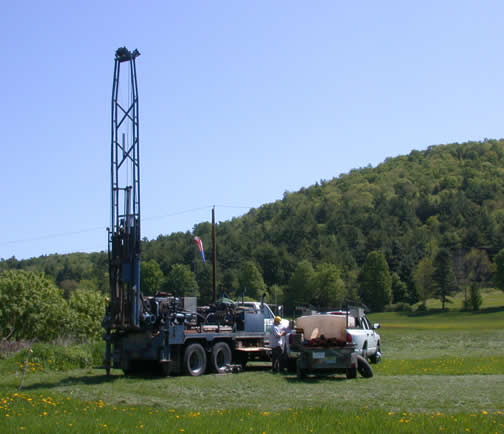
USGS drilling truck in the Perry Hill Basin, Charelstown, NH.
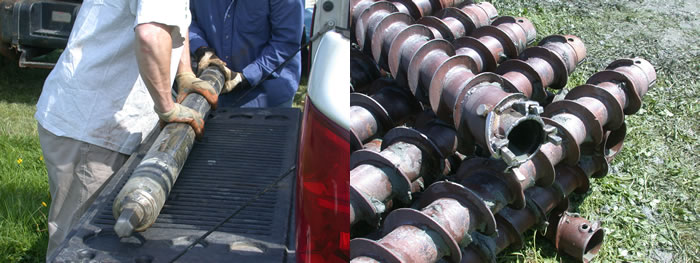
Hollow stem auger with Central Mining Equipment continuous sampling system using 3" core liners.
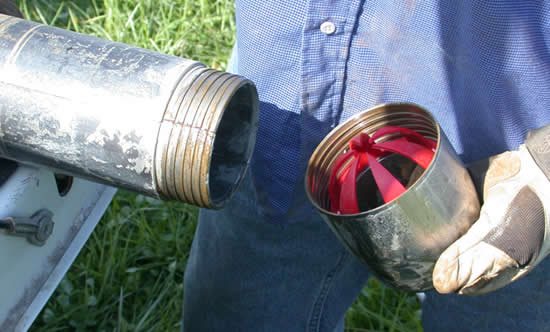
Core catcher in shoe of CME continuous sampler. The limbs on this core catcher have since been clipped and longitudinally split for easier entry of soft sediment into the sampler.
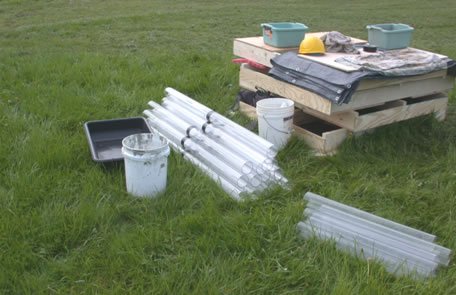
3 in. core liners (2.5-ft liners taped together with duct tape for each 5-ft core drive).
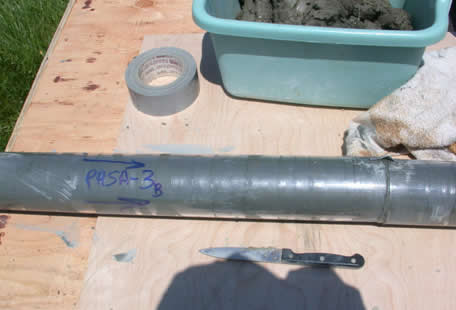
Core sample in liner. 2.5-ft sections are split and taped with duct tape after water is poured out of the liner and space in the liner is filled with waste sediment to prevent the core sample from traveling inside the liner during transport. Filling space in the core liners is critical to preventing further core deformation during transport.
Core Transport
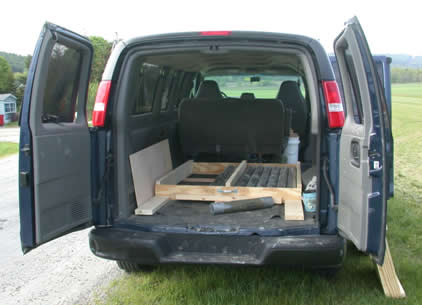
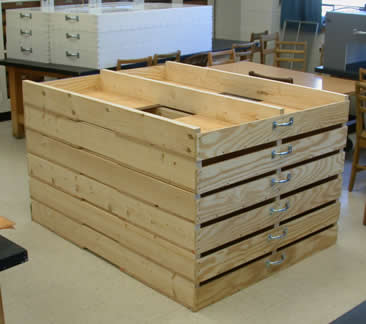
Left: Core transport boxes being filled. Rubber carpet matting was attached to the floor of each core box to prevent cores from easily sliding forward and backward in the core boxes during transport. Right: Stacked core transport boxes. The transport boxes are made from �" plywood and 2"x6" boards. Each box rests on the box beneath and has pegs that prevent the boxes from sliding. Core transport to a lab must be done with a minimum of disturbance to prevent additional deformation of very wet sediment. It is critical to prevent cores from rocking back and forth or sliding. Locking cores into position is also an important safety consideration.


